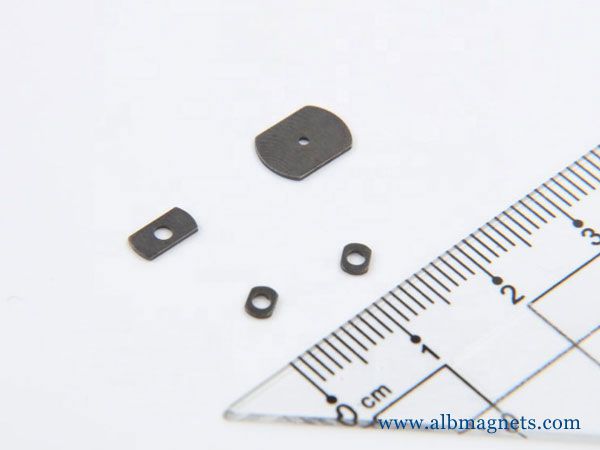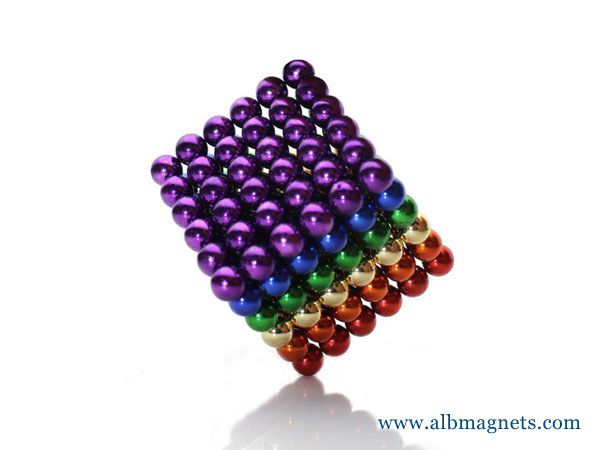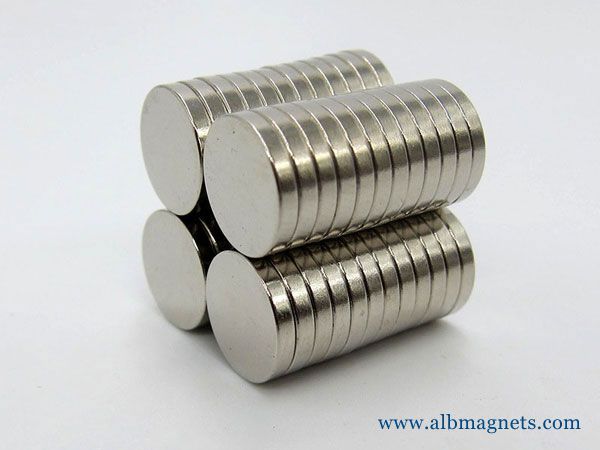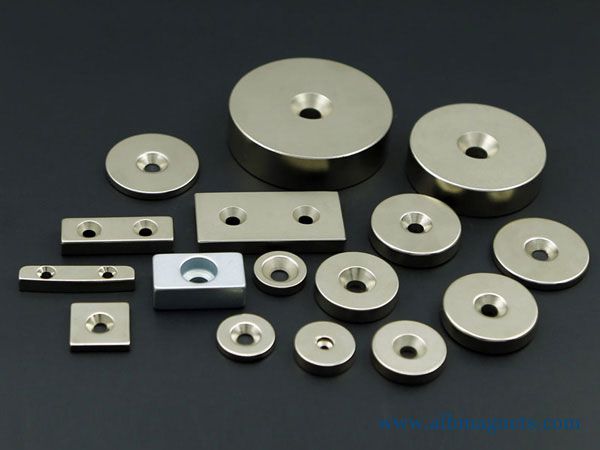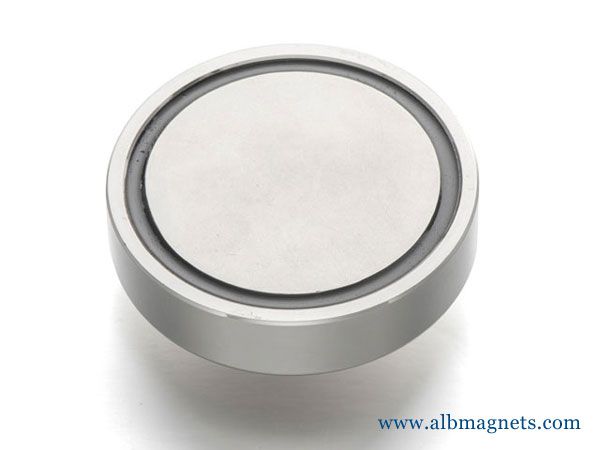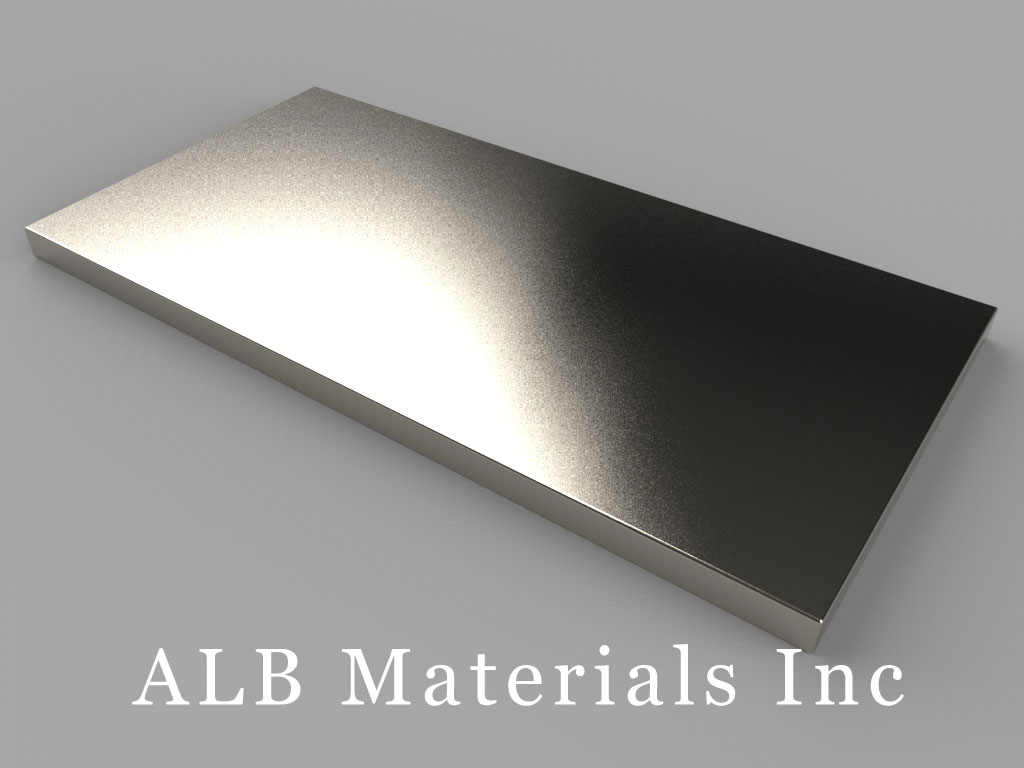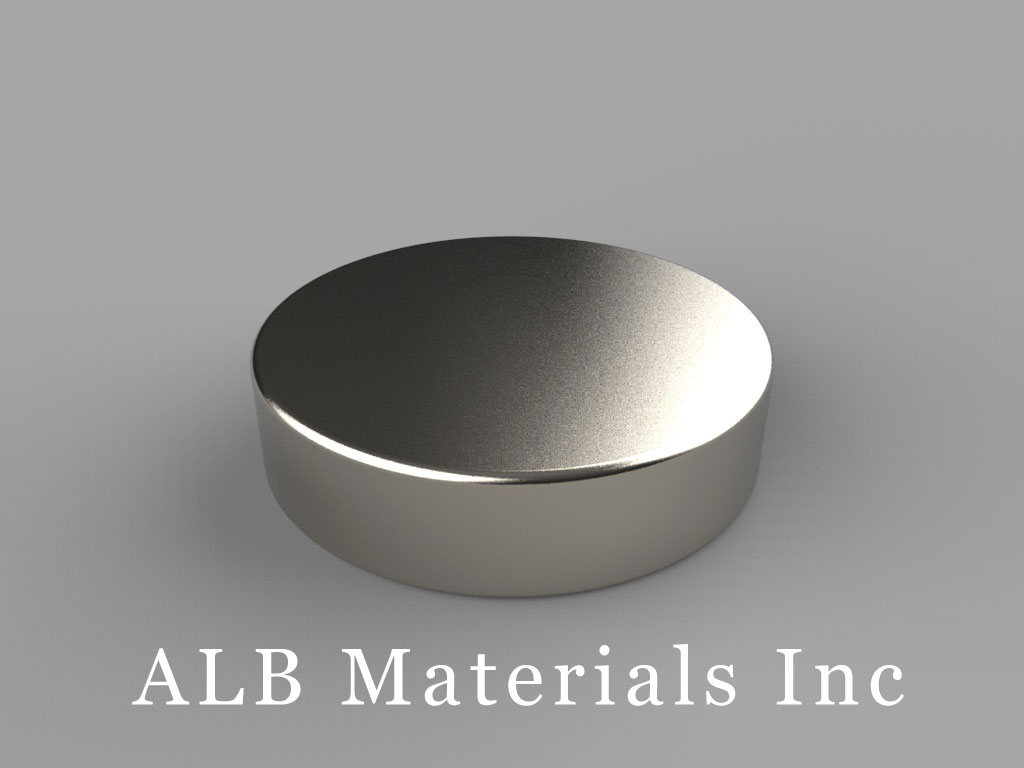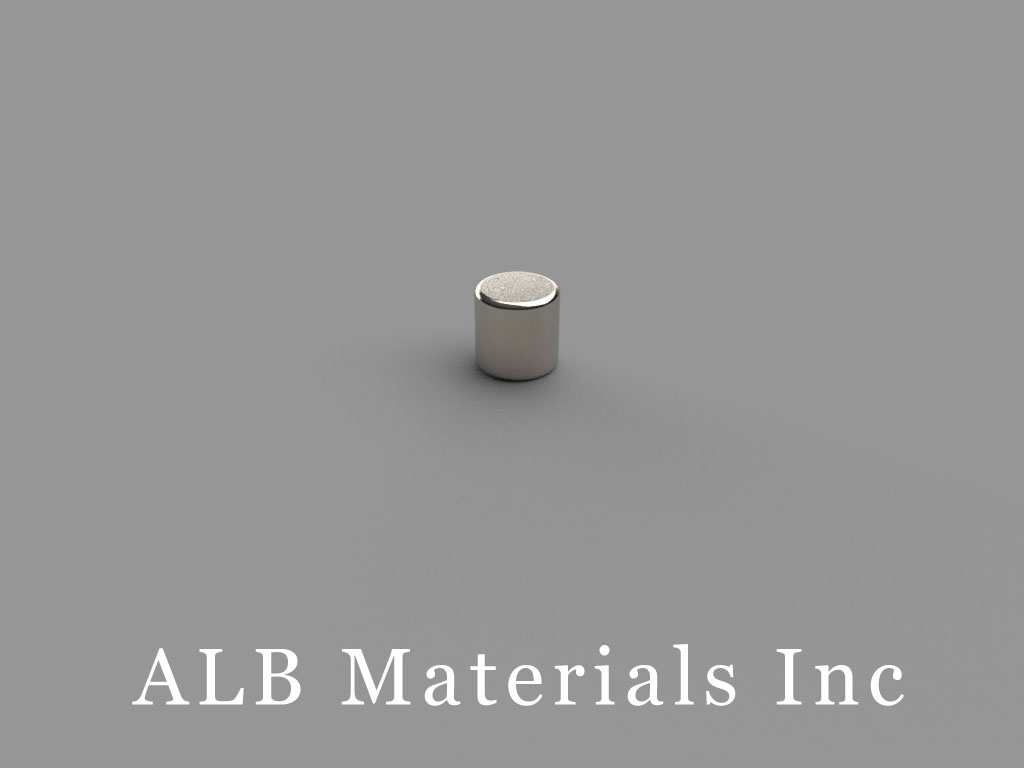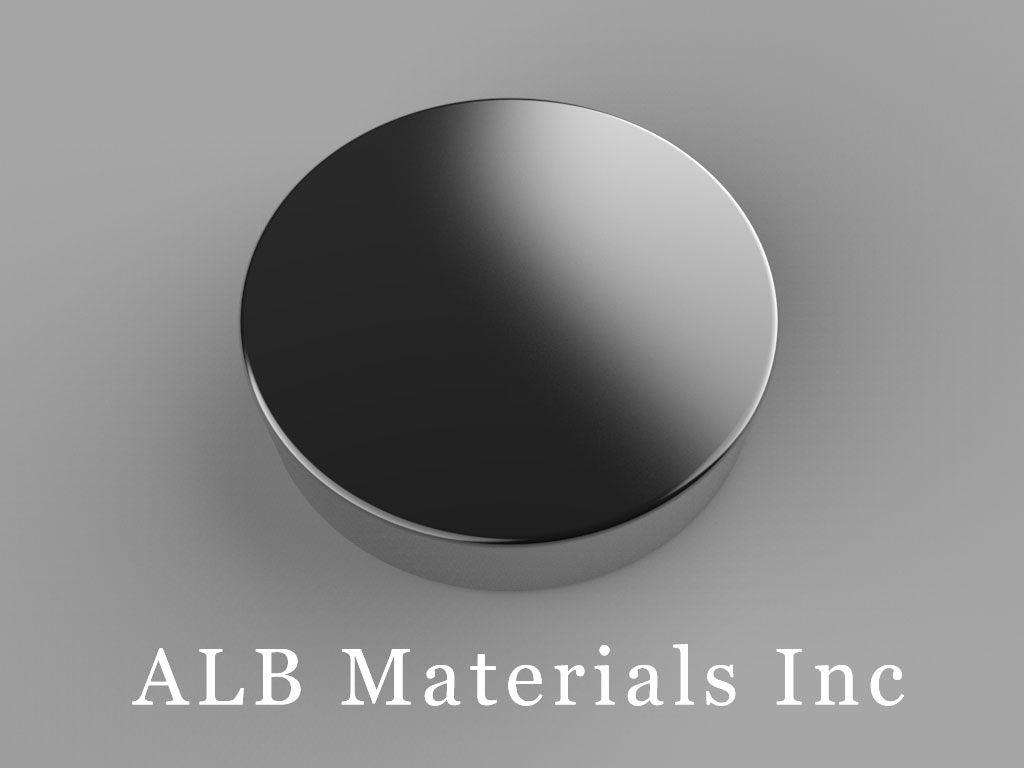401 Ryland St. Ste 200-A,
Reno, NV 89502
United States
E-mail: sales@albmaterials.com
- D4H2 Neodymium Magnets, 1/4 inch dia. x 2/10 inch thick
- BEE6 Neodymium Magnets, 7/8 inch x 7/8 inch x 3/8 inch thick
- D8x10mm Neodymium Magnet, 8 x 10mm Cylinder Magnet
- BX04X0 Neodymium Magnets, 1 inch x 1/4 inch x 1 inch thick
- D9x2mm Neodymium Magnet, 9 x 2mm Disc Magnet
- BC61 Neodymium Magnets, 3/4 inch x 3/8 inch x 1/16 inch thick
- MMS-H-X0 Standard Mounting Magnets
- D82SH Neodymium Magnets, 1/2 inch dia. x 1/8 inch thick
- B100x14x4mm Neodymium Magnet, 100 x 14 x 4mm Block Magnet
- D8C Neodymium Magnets, 1/2 inch dia. x 3/4 inch thick
- DH12 Neodymium Magnets, 1/10 inch dia. x 1/8 inch thick
- B882 Neodymium Magnets, 1/2 inch x 1/2 inch x 1/8 inch thick
- TK-BLK Magnetic Thumbtacks
- R313 Neodymium Magnets, 3/16 inch od x 1/16 inch id x 3/16 inch thick
- NSCA2 Steel Cups and Washers
- CB-W12H5L20D5/D7 Neodymium Magnet, 20x12x5mm with countersunk hole d5/7 Block Magnet
Uses Of Magnets Applications And Utilization In Daily Life
Magnets In The House
Magnets can be found all over the house in a variety of objects.
Use our interactive house below to see if you can find all the magnets in the house.
1. Bath Panel Magnets
Magnets are used to hold the bath panel in place so that in the event of a leak, it can be removed quickly without damaging the décor.
Magnets are fitted to the bath frame and steel discs are fitted onto the bath panel.
Good magnets for this are F4MG50 pot magnets and steel discs
2. Ceramic Tile Magnets
A ceramic tile or tiled panel can be held in place with magnets so that it can easily be removed to access stop cocks or electrical junction boxes.
3.Spot Light Magnets
When fitting spotlights in the ceiling our F999N magnet can be used to find the positions of the wooden beams by attracting to the steel clout nails which are used to fix the plasterboard to the beams.
Naturally, nails are only present above the beams, so they can be accurately located to avoid accidentally drilling a hole over a beam.
4. Weighing Scale Magnets
Weigh scales – often use magnets to dampen the movement so that when you jump off the scales the needle settles down quickly using the power of eddy currents.
8. Jewelry Magnets
Many items of jewelry utilize small neodymium magnets in their clasps to make unfastening them easier.
The clasps can release if excessive force is applied and this saved breaking a necklace which has become snagged on something accidentally.
9. Vacuum Cleaner Magnets
Vacuum cleaners use powerful neodymium magnets in their motors to give high suction from the smallest and lightest motors.
10. Treadmill Magnets
Gym equipment such as treadmills tends to use magnets that pass a sensor as the machine moves to count revolutions and convert this into distance information.
11. Computer Screen Magnets
Computer screen magnets were used to focus the pictures on older CRT computer displays but these are not needed on LED flat panel screens.
Older CRT computer screens could be damaged if magnets were brought too close to them
12. Speaker Magnets
All loudspeakers have magnets that interact with the coil of wire in the speaker cone to cause sound.
Small powerful speakers use Neodymium magnets to produce powerful sound.
13. Computer Hardware Magnets
All computers used to have a magnet inside their hard drives.
Today an increasing number of hard drives are solid-state drives that do not have magnets inside.
14. Television Magnets
Television magnets were used to focus the pictures on older CRT tube displays but these are not needed on plasma and LED screens.
Older TVs could be damaged if magnets were brought too close to them.
15. Smart Phone Magnets
SmartPhones – use small magnets to interact with a coil of wire to create the vibrate function.
Without magnets, they would not vibrate.
Blackberry phones often have a magnet in their protective pouch which tells the phone to sleep when it is returned inside the pouch.
16. Laptop Magnets
Laptop Computers have a magnet in their hard drive and usually one in the lid so that the computer can tell if the lid is open or closed.
New Uses for Magnets
10 Super-Helpful Ways to Use Magnets
Everyday items become even more useful with a little magnetic magic.
These small, powerful discs or strips (look for them in varying strengths at a craft store) excel at creating vertical storage and a safe space for tiny items.
Just remember to keep them away from kids who might swallow them as you try these ideas:
1. Secure a trash bag.
This trick works with metal wastebaskets: When you fold the trash bag over the top of the pail, affix it to the outside of the can with magnets.
2. Hold pins while sewing.
Sarah Jane's Craft Blog
Avoid a DIY disaster (hello, sharp pins all over the floor) by placing them in a dish doctored up with strong magnets.
Learn how to make this one at Sarah Jane's Craft Blog.
3. Corral paper clips.
Place a magnet in your desk drawer to keeps metallic clips in one spot.
4. Stick up kids' cups.
Adventures in Pinteresting
Rheannon at Adventures in Pinteresting came up with this genius idea to keep her kids from dirtying more than one glass each day.
She glued magnets onto cups so they could hover on the fridge above the water dispenser.
When her kids want a drink, they can quickly grab a cup and replace it for later when they're done.
5. Add removable pizzazz to a lampshade.
Twelve Oaks Manor
We love this creative idea from Angela at Twelve Oaks Manor.
Add magnets to the back of decorative flowers and use them to pretty up bare lamp shade.
Then, easily remove them whenever you tire of the look.
6. Fix a drafty door.
To make sure your sliding door always closes completely, affix one magnet to the door, and another to the frame (check out the how-to in this video ).
7. Organize your makeup.
Janicki Photography
Glue magnets to your favorite palettes and stick them up on a magnetic board, as Margaret did at Janicki Photography.
This way, your countertop remains clear, but your makeup is still within easy reach.
RELATED: 5 Cute Ways to Display Your Makeup »
8. Store aluminum foil and plastic wrap on the fridge.
It might not be the prettiest solution, but if you use these wraps often, consider placing small magnets inside the boxes.
Then, you can place them on your fridge and grab them in a flash.
9. Create a cute kitchen bin.
A Pretty Cool Life
Attach magnets onto vintage tins, like Cheryl at A Pretty Cool Life, to make fridge decor that also acts as an extra storage spot.
Unusual Uses for Magnets: Hammer Helper
If you've ever used a hammer you've probably kept a few nails in your mouth to keep yourself productive.
While this is an effective method, it can be cumbersome if you've got a few types of nails in use.
Modify your hammer to do double duty and carry some nails with a small magnet!
Wood handled hammers are perfect for including a small magnet in the flat bottom.
I found a drill bit with a matching diameter to the magnet I wanted to use.
Secure the hammer so the location for the magnet is facing upwards, then drill into the bottom of the handle as deep as required to contain your magnet.
Add a small dab of epoxy into the cavity and then insert the magnet until fully seated.
Allow the epoxy to cure and you're good to go!
Uses of Magnets - Applications & Utilization In Daily Life
Various Applications and Uses of Magnets
We come across magnets in various forms such as computers, MRI machines or inside some appliances which are used in the house, business or medical industry.
The size can be from very small to the large giant like structures.
Some magnet uses at home, in the laboratory, and in daily life is provided in the points below.
We might be using computers in our day to day lives but never wondered about the presence of a magnet inside it.
Magnetic elements present on a hard disk helps to represent computer data which is later ‘read’ by the computer to extract information.
Magnets are used inside TVs, Sound speakers, and radios.
The small coil of wire and a magnet inside a speaker transforms the electronic signal to sound vibrations.
Magnets are used inside a generator to transform mechanical energy into electrical energy where there are other kinds of motors that use magnets to change electrical energy to mechanical energy.
Electrically charged magnets can help cranes to move large metal pieces.
Magnets are used in filtering machines that separates metallic ores from crushed rocks.
It is also used in food processing industries for separating small metallic pieces from grains etc.
Magnets are used in MRI machines which are used to create an image of the bone structure, organs, and tissues.
Even magnets are used to cure cancer.
At home, you use magnets when you stick a paper on the refrigerator in order to remember something.
Attaching a magnetic bottle opener to the fridge can come in handy.
We often use pocket a compass to find out directions when we are on a trek.
The pocket compass uses a magnetic needle to point north.
The dark strip on the back of debit and credit cards is of magnetic nature and are used to store data just like computers’ hard drives.
Magnets can help collect all the nails which are scattered on the ground after a repair job.
These were some of the different magnet uses.
What Magnets are Used in Everyday Life
Rare earth magnets play a significant role in a wide range of devices including simple toys, computers, credit cards, MRI machines, and business equipment.
There are: Health and Medicine
Magnets are found in some commonly used medical equipment such as and Magnetic Resonance Imaging machines.
MRIs use powerful magnetic fields to generate a radar-like radio signal from inside the body, using the signal to create a clear, detailed picture of bones, organs and other tissue.
An MRI magnet is very strong – thousands of times more powerful than common kitchen magnets.
Another medical use for magnets is for treating cancer.
A doctor injects a magnetically-sensitive fluid into the cancer area and uses a powerful magnet to generate heat in the body.
The heat kills the cancer cells without harming healthy organs.
In the Home
Though it may not be obvious, most homes contain many magnets.
Refrigerator magnets hold papers, bottle openers, and other small items to the metal refrigerator door.
A pocket compass uses a magnetic needle to show which way is north.
The dark magnetic strip on the backside of a credit card stores data in much the same way as a computer’s hard drive does.
Vacuum cleaners, blenders and washing machines all have electric motors that work by magnetic principles.
You’ll find magnets in phones, doorbells, shower curtain weights and children’s toys.
Computers and Electronics
Many computers use magnets to store data on hard drives.
Magnets alter the direction of magnetic material on a hard disk in segments that then represent computer data.
Later, computers read the direction of each segment of the magnetic material to “read” the data.
The small speakers found in computers, televisions, and radios also use magnets;
inside the speaker, a wire coil and magnet converts electronic signals into sound vibrations.
Electric Power and Other Industries
Magnets offer many benefits to the industrial world.
Magnets in electric generators turn mechanical energy into electricity, while some motors use magnets to convert electricity back into mechanical work.
In recycling, electrically-powered magnets in cranes grab and move large pieces of metal, some weighing thousands of pounds.
Mines use magnetic sorting machines to separate useful metallic ores from crushed rock.
In food processing, magnets remove small metal bits from grains and other food.
Farmers use magnets to catch pieces of metal that cows eat out in the field.
The cow swallows the magnet with its food;
as it moves through the animal’s digestive system it traps metal fragments.
Compasses and Navigation
In historic times, magnets had a supernatural thriller to them due to the fact human beings didn’t virtually recognize the technology at the back of how they work.
However, the early Chinese are believed to have first used them in magnetic compasses for navigation purposes.
They found out magnets could direct needles and correlated with the north pole, and used that information to navigate.
The early compasses have been created with lodestone because present-day magnets were no longer invented yet.
Lodestone comes from the mineral magnetite and is the handiest obviously-occurring magnet.
modern-day day magnets, like neodymium magnets and uncommon earth magnets, are crafted from a complicated process in which some of the metals are forged together.
This technique helps to cause them to stronger and extra suitable for a way they’re used today.
Therefore, lodestone in comparison to sturdy uncommon earth magnets is weaker.
Robots and Medicine
Now, the uses of NdFeB magnets are numerous and varied.
Advances within the manner that uncommon earth magnets are created have made them more flexible and easier to use in some of the exceptional applications.
In robotics, magnets are essential.
Not only do magnets assist with the electronics part, but they assist make robots extra mobile and compact.
These days, foldable drones, magnetic nanotechnologies like Google X and other progressive makes use of magnets have popped up.
Magnets can be one of the oldest materials in the world, but there may be nevertheless lots that we don’t recognize about them.
Innovators will probably continue to use them in new, creative methods which have the capability to improve how we stay.
Magnets are historic.
They’re so old the real discovery of magnetism is extremely of a legend.
It becomes stated that approximately 4000 years ago, a shepherd named Magnes to become out herding his sheep when his metallic workforce and the nails in his shoes stuck to a black rock.
That black rock becomes magnetite and it contained lodestone.
Since then, our use of magnets has developed in hundreds of different methods.
Magnets and its strength
We may additionally have been using magnets for centuries, however, it wasn’t until in the direction of the 20th century that they have been greater fully understood with the aid of scientists.
Before they had been more of a paranormal or mysterious substance and nobody surely knew how or why they worked, attracting magnetic materials.
But, as soon as magnetic fields have been extra absolutely understood, scientists started out coming across the connection between magnets and different phenomena, mainly power.
While performing an experiment, Hans Christian Oersted, a physicist and chemist, located that a magnetic compass needle moved within the presence of an electric cutting-edge.
He deduced that the energy and magnetism have been intertwined.
His discovery changed into critical for later scientists and inventors like Nikola Tesla and Thomas Jefferson to use the connection to create electronic devices.
Now, most of the devices that we use today (TVs, blenders, telephones, and so forth.) use electromagnetism.
Part of the content in this article is reproduced from other media for the purpose of transmitting more information and does not mean that this website agrees with its views or confirms the authenticity of its content. It shall not bear direct responsibility and joint liability for the infringement of such works.
If there is any infringement, bad information, error correction, and other issues in the content of this page, please contact us at info@albmaterials.com
Link to this article: https://www.albmagnets.com/blog/uses-of-magnets-applications-and-utilization-in-daily-life.html
How to choose and buy a strong neodymium magnet? ALBMagnets is a professional company for strong magnet design and manufacturing,
providing you with reliable N35, N38, N42, N52, N42SH and other grade super neodymium magnets and SmCo rare earth magnets.




